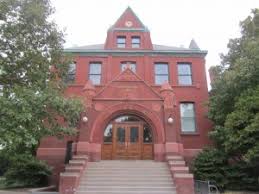Architecture Program

Architecture Program: Faculty Scholarly and Creative Activity
Document Type
Article
Date of this Version
2018
Citation
Published in Reading Architecture: Literary Imagination and Architectural Experience, edited by Angeliki Sioli and Yoonchun Jung (New York: Routledge, 2018), pp. 72-83.
Abstract
Architecture has a way of bringing the past to the present for us. It is an important asset, for the experience of the past constitutes a positive moment in our everyday conduct of life, allowing a contemplation on our existential meaning. It is an often neglected aspect, as it lies outside of architecture's aesthetic, functional, or structural realms. Mechanisms at work in effectuating this feature can vary, among which the following are notable: A building may commemorate a particular event or individual by being a monument. A building may refer to the time of its origin by way of its style. I also have likened architecture to palimpsest, on the surface of which an old writing, once washed off, has resurfaced.1 Not unlike palimpsest, a building may call back a once-forgotten past event by way of physical traces it carries. My focus here, however, is on the everyday architecture, which, without having deliberate designation (monument), requiring specialized knowledge (style), or carrying physical trace (palimpsest), nonetheless brings the past to the present for us.
Needless to say, I am not claiming that the presentation of the past happens anytime, to anyone, or with any piece of architecture. Nor am I here to find out under what circumstances it occurs. Instead, I am interested to see how architecture participates in people's experience of the past when it does so in their everyday life. My study is about experiential, rather than physical, qualities of architecture, although of course I certainly am interested in the physical attributes that contribute to the experience. And the study will benefit from exemplary experiences rather than actual ones of any kind, especially since the accounts of my own experiences would not have much credibility. For these reasons, I have chosen a piece of fiction for my study, with the expectation that by doing so I will take advantage of a literary author's acute sensitivity to the environment and keen ability to describe his reactions. The literary piece is Austerlitz (2001) by W. G. Sebald (1944-2001) in particular. In the story full of architectural descriptions, the physical environment works as a catalyst by which the eponymous protagonist regains the past he once lost and as a place in which he seeks his parents' past he himself has never experienced
Included in
Architecture Commons, European History Commons, German Literature Commons, Theory and Criticism Commons


Comments
Copyright © 2018 Taylor & Francis. Used by permission.